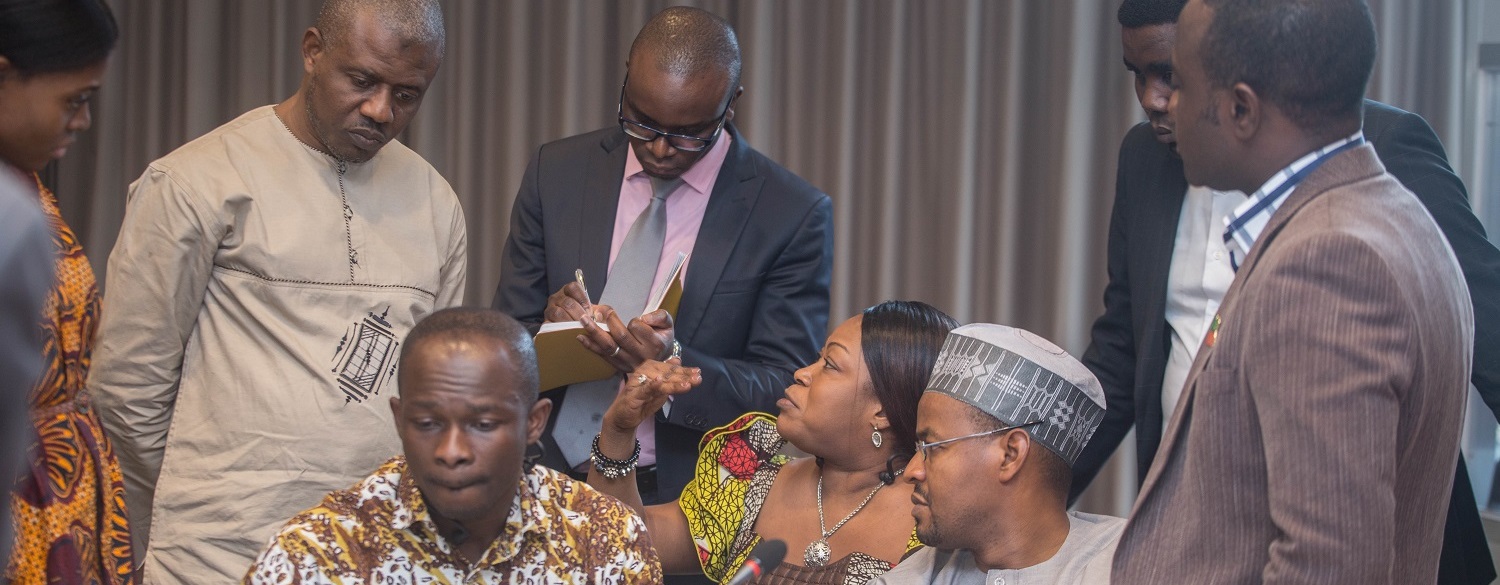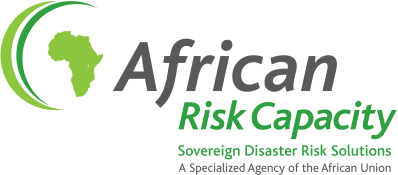The ARC Capacity building programme

The ARC capacity building programme aims to prepare African governments for effective Disaster Risk Management through the introduction of tools and processes that enhance a multidisciplinary response by governments. Member States interested in purchasing insurance first enter into a Memorandum of Understanding with the ARC Agency which commits them to the capacity building programme. Through this programme, experts from key government departments undergo training and have to complete milestones in risk modelling, contingency planning and risk transfer – all critical to understanding parametric insurance and owning the process to enable the country make informed decisions on insurance uptake. The ARC capacity building programme consists of the following workstreams:
1. Introduction to Disaster Risk Financing and Country Engagement
Technical experts and senior political officials are introduced to disaster risk financing through ARC concepts and its approach. The ARC capacity building programme is designed collaboratively between ARC and the government’s focal ministry including relevant technical experts. The programme structure where necessary leverages on existing relevant programmes and platforms within the country to ensure that ARC programmes are embedded within national programmes.
2. Multi-Hazard Risk Modelling
To quantify the risk of different natural hazards ARC Member States are exposed to, ARC through its Technical Support Division (TSD) within the Research and Development Department (R&D) provides training to in-country Technical Working Groups (TWG) to customise the different natural hazard risk models. The target audience of the trainings and technical assistance for customisation is Government departments and development partners involved in preparing for and responding to disasters, including the following among others: Disaster Management Departments, the Ministries of Agriculture and Livestock, the Departments of Meteorology, the National Statistical Services, the National Agriculture Research Organizations, Social Protection departments and the Ministries of Finance. Other TWG members may include Academia, Civil Society Organizations, UN Agencies and other institutions that play a significant role in natural hazard monitoring, modelling and response on the continent. Regional Economic Communities (REC) are also targeted by ARC to facilitate the institutionalisation of the innovative tools that have been developed among the Member States.
The final product of the in-country training and customisation process is a country risk profile that quantifies the impact and frequency of natural hazards faced by the country in the past and the likely impact of future events based on current exposure and vulnerability. The risk profile enables the country to determine the relevance and appropriateness of using various risk management tools to manage the risk of the specific hazard. It also used as a basis for risk transfer to insurance markets through ARC Ltd if the country decides to adopt such a risk management strategy. The customised risk profile within the ARC risk modelling platform, Africa RiskView, also enables the ARC Member States to monitor the hazards they are exposed to, thus providing an early warning function.
Additionally, all new and existing ARC risk models are subject to rigorous internal validation processes for quality assurance purposes as well as to enhance accountability and transparency of ARC’s product offerings. The ARC Agency Governing Board has established an expert advisory panel of technical experts on various perils to support the continued improvement and refinement of ARC risk models and their ability to replicate the impacts of weather shocks on the ground. The model sign-off processes to rely on external experts represented in the Technical Review Forum (TRF) for all new and existing models and the Customisation Review Committees (CRC) for models that require in-country customisation. Whereas the TRF provide technical guidance on model input data, parameters and functionality improvements, the CRC reviews and assesses model customisations to assure the quality of in-country customisations, thus guaranteeing that ARC risk models correctly reproduce the severity of natural hazards as experienced on the ground.
3. Contingency Planning
In order to take out insurance from ARC Ltd, a country must develop a contingency plan outlining the use of any ARC Ltd insurance payout in case of a disaster. With advisory support from ARC, the country develops an operations plan that meets the Certificate of Good Standing (CGS) Standards established by the ARC Governing Board. ARC works with in-country technical experts in emergency response and social protection to explore existing contingency funding mechanisms and response activities in the country that could be complemented and used by ARC payout and to consider supporting the scaling-up of existing social protection programmes. These plans must go through independent reviews to by experts in contingency planning and humanitarian response as well as the Peer Review Committee of the ARC Board to assess their feasibility before they are approved by the ARC Governing Board. Through its work, ARC can help protect gains made under these regular programmes from being wiped away by weather-related risks
4. Risk Transfer
Finance and disaster management experts in key government departments are introduced to risk transfer concepts and ARC’s parametric insurance. Particular emphasis is placed on building an understanding on how risk transfer fits into the broader risk management framework for the country. This work stream covers the relationship between the country’s risk profile and a government’s considerations in deciding on what level of risk to retain as a country and what part to transfer via insurance to ARC Ltd. ARC assists Member States to determine the optimal level of risk to transfer to the market, and to understand how such a strategy fits into the overall national risk management strategy. Finally, it also looks at how risks not covered by ARC (retained risk) are managed.
The TWG experts are trained to understand ARC’s risk transfer parameters and the selection of insurance parameters that will determine the amount of risk transferred to the risk pool, and therefore the amount a government could expect to receive in the event of a disaster event – which in turn will determine the required premium amount to purchase the insurance coverage.
The ultimate objective of the capacity building programme is to enable governments to make an informed decision regarding transferring the country’s weather risks to ARC. While completing the capacity building programme prepares countries to transfer part of their risk to ARC Ltd and participate in the ARC’s risk pool, ultimate decision to join the risk pool is left to the discretion of each government.





